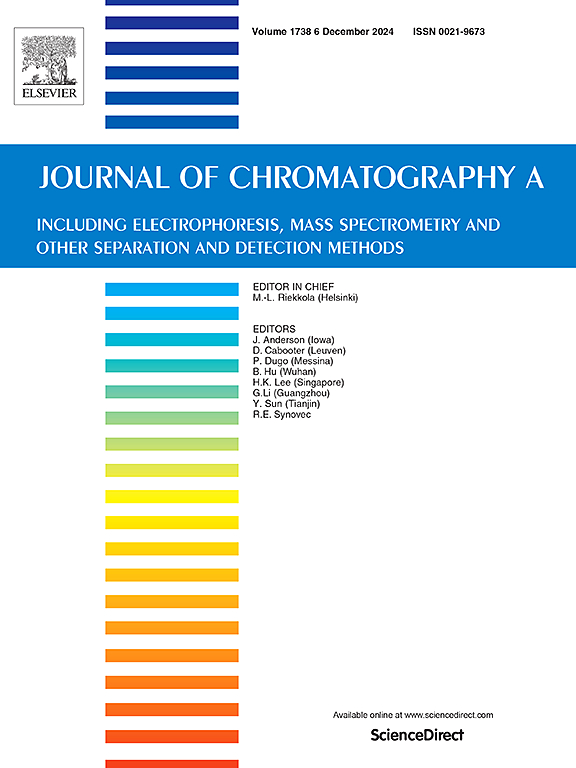Knox-Saleem kinetic performance limits in liquid chromatography. Part 2: Alternative interpretation – No upper limit to separation performance
IF 4
2区 化学
Q1 BIOCHEMICAL RESEARCH METHODS
引用次数: 0
Abstract
In Part 1 of this series, the original Knox-Saleem study of the effects of column dimensions and operational conditions on the column performance was reformulated in contemporary language and expanded to a broader class of the columns and their operational conditions. However, the view of the effects in Part 1 was the same as in the original Knox-Saleem study. In both cases, the effects were treated as the performance limits. The following issues were addressed. What is the shortest time for obtaining a required separation performance if column pressure is limited? What is the highest separation performance achievable in a given time at a given pressure? And so forth. While addressing these issues, it has been established in Part 1 that there is no fundamental limit to the separation performance of any given column structure. For example, any separation performance of a packed column (e.g., any peak capacity) no matter how high can be obtained at any pressure no matter how low as long as the analysis time is acceptable. This and similar factors suggest that the effects of a column parameters and operational conditions on the column performance might be viewed not as the limits, but as the tradeoffs between the parameters, the operational conditions and the performance. This approach is developed in this report. The properties of the tradeoffs are evaluated, and potential performance of several column structures is compared.
液相色谱中Knox-Saleem动力学性能极限。第2部分:可选解释-分离性能没有上限
在本系列的第1部分中,对列维度和操作条件对列性能影响的最初Knox-Saleem研究用现代语言重新表述,并扩展到更广泛的列及其操作条件类别。然而,第1部分对影响的看法与最初的Knox-Saleem研究相同。在这两种情况下,效果都被视为性能限制。解决了以下问题。如果柱压有限,获得所需分离性能的最短时间是多少?在给定时间、给定压力下可达到的最高分离性能是多少?等等。在解决这些问题时,在第1部分中已经确定,任何给定列结构的分离性能都没有基本限制。例如,填料柱的任何分离性能(例如,任何峰值容量),无论多高,都可以在任何压力下获得,无论多低,只要分析时间是可接受的。这和类似的因素表明,列参数和操作条件对列性能的影响可能不被视为限制,而是参数、操作条件和性能之间的权衡。本报告阐述了这种方法。评估了各种结构的性能,并对几种柱结构的潜在性能进行了比较。
本文章由计算机程序翻译,如有差异,请以英文原文为准。
求助全文
约1分钟内获得全文
求助全文
来源期刊

Journal of Chromatography A
化学-分析化学
CiteScore
7.90
自引率
14.60%
发文量
742
审稿时长
45 days
期刊介绍:
The Journal of Chromatography A provides a forum for the publication of original research and critical reviews on all aspects of fundamental and applied separation science. The scope of the journal includes chromatography and related techniques, electromigration techniques (e.g. electrophoresis, electrochromatography), hyphenated and other multi-dimensional techniques, sample preparation, and detection methods such as mass spectrometry. Contributions consist mainly of research papers dealing with the theory of separation methods, instrumental developments and analytical and preparative applications of general interest.
 求助内容:
求助内容: 应助结果提醒方式:
应助结果提醒方式:


